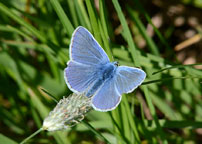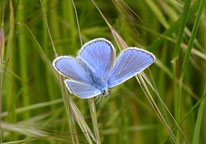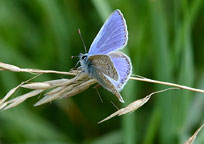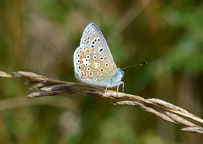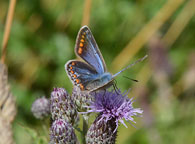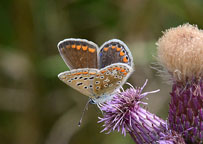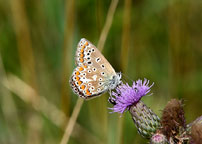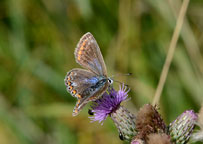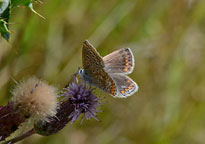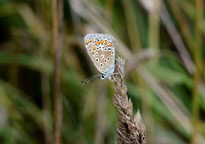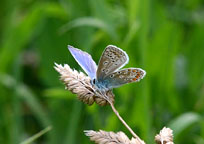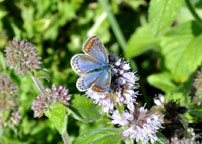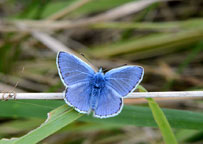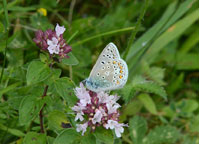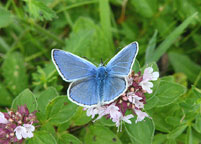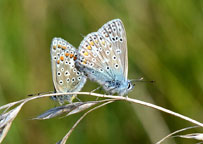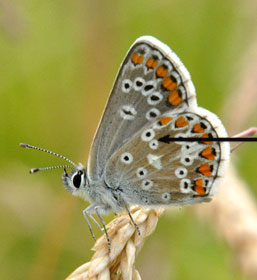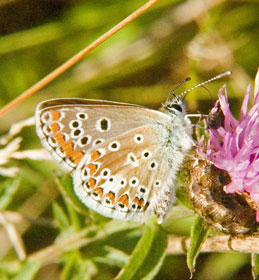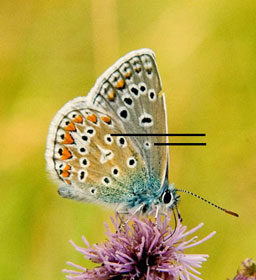Larval food plants include White Clover and Bird's Foot Trefoil, both of which suffer from overshadowing in uncut grass on fertile soils. South mentions Rest Harrow, Ononis spinosa, a taller plant and more competitive in longer grass, and at Roseland House there is a small wild population of another legume, Meadow Pea Vicia sativa which is able to scramble up through the long grass. The adults were common in 2010 in sheltered corners of the paddock in late July, where they settled on the Creeping Thistles, then in early August favouring the Water Mint as the Thistle flowers decreased. The drop in numbers in 2011 occurred while the paddock was still being grazed, with plenty of White Clover in the short grass. After grazing ceased in 2011 the Clover decreased in the longer grass. Wider mown strips may remedy this.
In the south of England, Common Blues produce two broods per year. The adults flying May and June are from the second brood of eggs laid the previous autumn which have overwintered as larvae. These early summer adults lay the first of brood of eggs, which are on the wing as adults in July to September. In 2010 a peak number of adults on the wing was noticed in Great Yeldham in the second week of August with over half a dozen at a time flying over the Water Mint patch and landing to take nectar.
To identify the males (with blue upper wing surfaces), it is necessary to see that the underside is brown-tinted and has black spots ringed with white, unlike Holly Blues whose underwing surfaces are clearer pale blue, and has small black spots without white rings. The black lines across the white borders of hardly extend onto the blue area at all, unlike Adonis Blues where the black lines extend further.
Females upper wing surfaces are brown or blue, merging into brown towards the margins. If they are the brown version make sure that they have the extra spots on the undersides of the forewings to distinguish them from Brown Argus and that the pair of spots on near the leading edge of the underwings and away from the body are staggered and not closely paired like a colon.
Brown Argus are generally smaller than Common Blues but this character cannot be relied upon as is shown by an extra small Common Blue female in South's plate 106.
